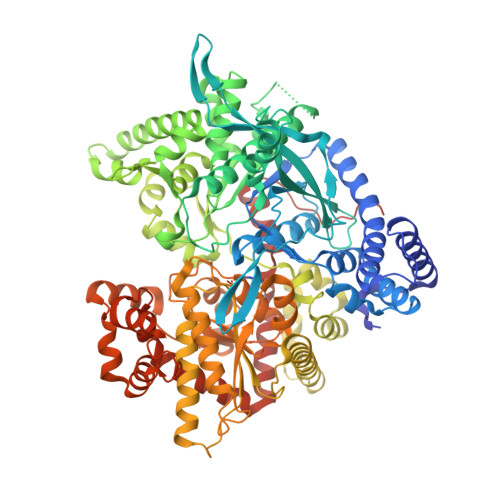FR258900, a potential anti-hyperglycemic drug, binds at the allosteric site of glycogen phosphorylase
Tiraidis, C., Alexacou, K.-M., Zographos, S.E., Leonidas, D.D., Gimisis, T., Oikonomakos, N.G.(2007) Protein Sci 16: 1773-1782
- PubMed: 17600143
- DOI: https://doi.org/10.1110/ps.072925607
- Primary Citation of Related Structures:
2OFF - PubMed Abstract:
FR258900 has been discovered as a novel inhibitor of human liver glycogen phosphorylase a and proved to suppress hepatic glycogen breakdown and reduce plasma glucose concentrations in diabetic mice models. To elucidate the mechanism of inhibition, we have determined the crystal structure of the cocrystallized rabbit muscle glycogen phosphorylase b-FR258900 complex and refined it to 2.2 A resolution. The structure demonstrates that the inhibitor binds at the allosteric activator site, where the physiological activator AMP binds. The contacts from FR258900 to glycogen phosphorylase are dominated by nonpolar van der Waals interactions with Gln71, Gln72, Phe196, and Val45' (from the symmetry-related subunit), and also by ionic interactions from the carboxylate groups to the three arginine residues (Arg242, Arg309, and Arg310) that form the allosteric phosphate-recognition subsite. The binding of FR258900 to the protein promotes conformational changes that stabilize an inactive T-state quaternary conformation of the enzyme. The ligand-binding mode is different from those of the potent phenoxy-phthalate and acyl urea inhibitors, previously described, illustrating the broad specificity of the allosteric site.
- Institute of Organic and Pharmaceutical Chemistry, National Hellenic Research Foundation, Athens, Greece.
Organizational Affiliation:


















